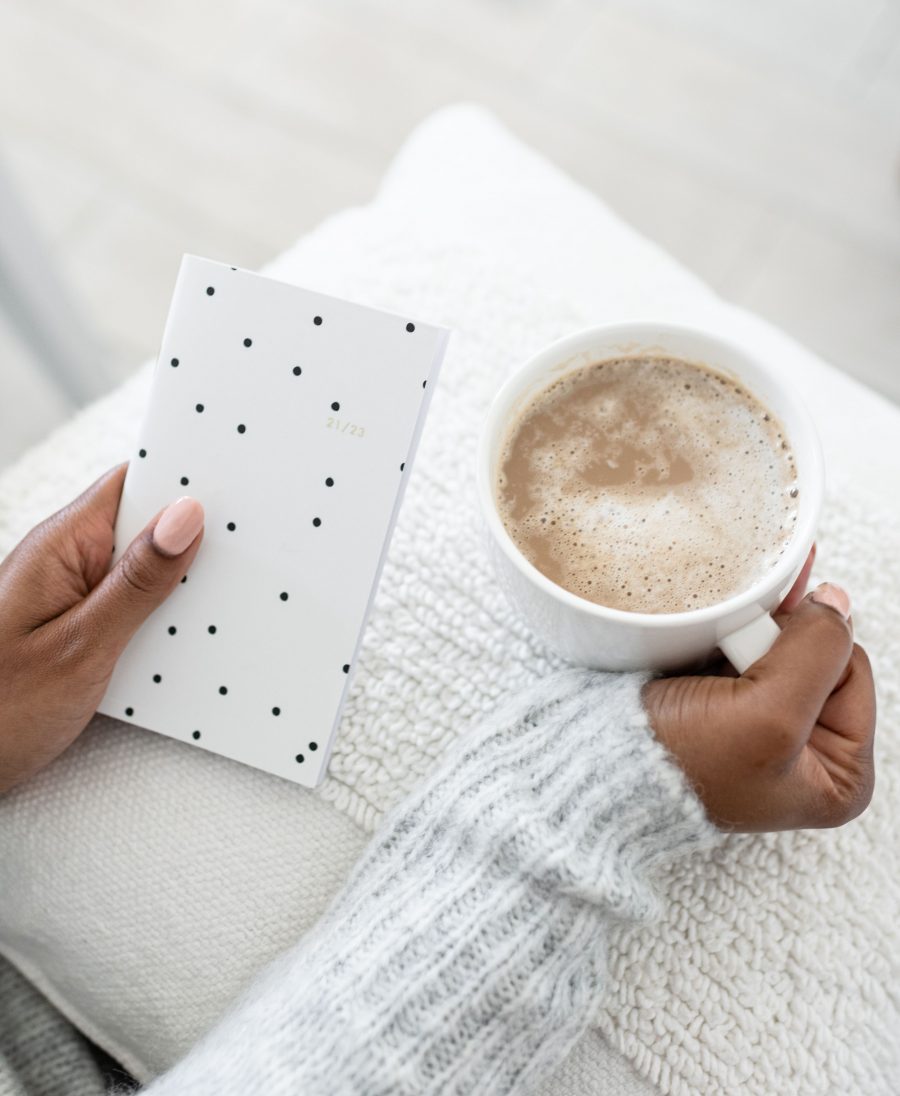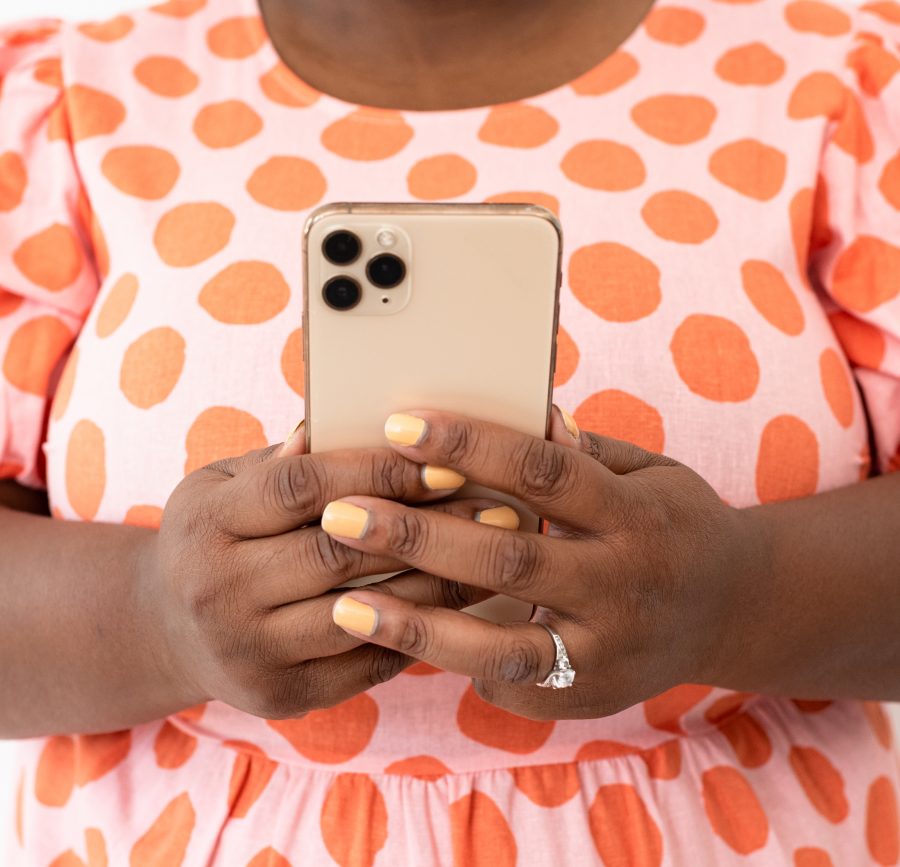
Financial experts note that people tend to fall into two categories: savers and spenders. I’m the latter; I have a habit of making purchases based on what I want instead of what I need. To curb my impulsive “I can afford everything” buying mentality, I tracked my spending decisions over the past 30 days. Here’s what I learned—and how you can use these saving strategies to allow your dollars to add up in a more impactful way over time.

Source: Colorjoy Stock
1. I stopped buying coffee every morning
I’m a self-proclaimed coffee junkie. I love the smell of freshly ground beans, the first hot sip of french roast on a blustery winter day, the icy jolt from a tall glass of cold brew. I also love the ritual of stopping at a coffee shop on my way to work. It feels like a special treat, just for me, before diving into the hurried tasks of my day. Oh, and I’m a mom to a nine-month-old for whom sleep is optional, so there’s that.
However, the cost of each barista visit adds up quickly. I realized that I was easily spending around $2-6 a day. On a beverage! If you do the basic math, that is something like $500-1500 a year. Considering that is the cost of a super sweet vacation, I challenged myself to stop buying coffee for 30 days and simply make it at home.
The first week sucked. I longingly stared out the window at my favorite cafe every time I drove past, and then took a sip out of my to-go mug of coffee made at home, which was… fine. It still got the job done; I mostly experienced the natural lows that occur from being disciplined (sigh) instead of spontaneous (yay!). Instead, I saved coffee purchases for meetings or dates with other people—moments when I could linger, chat, and truly enjoy my beverage with great company. This resulted in many upsides, such as a reduced caffeine reliance, more money in my pocket, and a better appreciation for treat yo’ self days. (Hint: it’s not a treat when you get it every day!)
Monthly savings: $60-180
2. I limited dining out to special occasions
Growing up, my family usually went out to dinner to celebrate specific events: birthdays, relatives in town, Christmas Eve after late night mass. We ordered pizza a few times a year on Friday nights, complete with watching new episodes on ABC’s TGIF and drinking Pepsi out of the can. If that sounds lame, it wasn’t—because I knew that dining out marked a special occasion. Somewhere along the way I forgot that, and eating out became the norm due to a hectic schedule, lackluster cooking skills, and a taste for convenience.
Typically, I eat out for lunch 1-2 times a week, and my husband and I either pick up dinner or visit a restaurant 1-3 times, mostly on the weekend. That can cost anywhere from $8-15 for a single lunchtime outing and $20-75 for take-out or a sit-down meal, not to mention the fact that labor costs are rising, which has led to restaurant prices inching up. To save money for 30 days, I made a conservative choice to limit weekly dining out to one lunchtime outing on my own and one weekend dinner out as as couple. I wanted to see if I could retrain myself to view dining out as a special, cherished event, rather than an everyday occasion.
The result? I didn’t notice much of a difference; I simply needed to do a bit more meal planning for work and home. I also felt better health-wise and had more energy. Sure, pulling out a tuna sandwich and an apple at my desk felt less exciting than the Whole Foods salad bar—but spending the extra cash on a nice steak dinner with my husband and our favorite bottle of pinot noir later that week was worth every penny.
Monthly savings: $32-60 (by dropping one individual lunch per week) and $80-300 (by dropping one dinner for two per week)

Source: Colorjoy Stock
3. I stuck to a list
Otherwise known as, “how I avoided accidentally spending $100 at Target on shit I don’t need.” Even though the dollar section always calls my name and insists I need new notepads or decorative candles, I’m learning that if I actually stick to a legitimate list of items, I end up saving money. This approach proved useful at any store; before going on errands, I wrote down my list of items and then did my very best to only purchase those specific things. If I walked down an aisle and thought, “Oh! I forgot that I needed shampoo!” I asked myself if I was legitimately out of shampoo or if I was just running low. I discovered it was often the latter, and realized I could put shampoo, for instance, on my next shopping list. And at the grocery store, I learned that having a list kept me from buying (usually unhealthy) splurge items (like large packages of sour gummy worms).
Was it less fun to shop that way? Well, yes. It feels limiting to buy what’s on your list rather than view a store as your oyster; however, I’m not made of money and need to stick to a budget. This helped, immensely. One surprising perk: I also saved a lot of time by sticking to a list because I didn’t aimlessly wander around the store every time; I got in and got out with the things that I needed.
Monthly savings: $10-100
4. I remembered how to have old-school fun.
Once I became an independent adult, my idea of fun shifted to events that pretty much always cost money: drinks, dinners, concerts, plays, vacations, classes, parties… it all had a price, and I wanted to see if I remembered how to have fun the old-school way. You know, for free. Turns out there were plenty of things to do, like walking around the local art museum with a girlfriend, or running an informal 5k with my sister instead of signing up for an official race, or watching Netflix at home with stovetop popcorn.
At first, it felt a little boring, but mostly because my expectations were accustomed to thinking about activities as being Instagram-able first and foremost. I also felt a little self-conscious and lame by offering up alternative suggestions to friends who wanted to go out. But I got over it, and my friends never honestly seemed to mind because they just wanted to spend time together.
There’s joy in the simple things, like hanging out with the people you love with no agenda or timetable or required five-course meal. At the end of the 30-day period, I desperately felt ready for a nice glass of wine at a fancy bar; I wanted to fill up my calendar with everything fun. However, this exercise taught me to be more creative, more present, and more appreciative of people instead of things.
Monthly savings: $15-200

Source: Colorjoy Stock
5. I took a break from my phone
Earlier this year, I received a serious lecture from my husband about the fact that I went over our data plan pretty much every single month. This had become a massive habit of mine, and an expensive one since most cell phone carriers charge $5-15 for each GB of overage. To mitigate these unexpected costs, I forced myself to shut off cellular service for all applications unless I had access to Wi-Fi.
I soon noticed that I absent-mindedly checked my phone alllll the damn time. Usually for no good reason whatsoever. Additionally, I used GPS when I didn’t need to (I mean… I know how to get from my sister’s house to my apartment) and browsed Spotify to my heart’s content during long car rides. And social media? I opened those apps constantly, just to look and basically distract myself from real life whenever I felt bored, lonely, or anxious. I also, gulp, came face-to-face with my penchant for grabbing my phone while driving, which is incredibly unsafe. I thought I was being quick at a stop light to glance down at my email, when I was really just making life on the road unsafe for myself and others.
By putting my phone down, leaving it in my purse, or setting it aside, I not only saved money each month, I also had the opportunity to be much more aware on a daily basis. My emotional state improved, since I wasn’t continuously comparing my life to virtual reality. The data savings were great, but I felt grateful to kick a bad habit along the way.
Monthly savings: $5-20
Cutting these five items from my monthly budget taught me valuable lessons and put hundreds of dollars back into my bank account. Most importantly, it reminded me to make more meaningful, thoughtful financial choices, such as making extra student loan payments, money saved for a down payment on a house, and more bulk to my savings.
